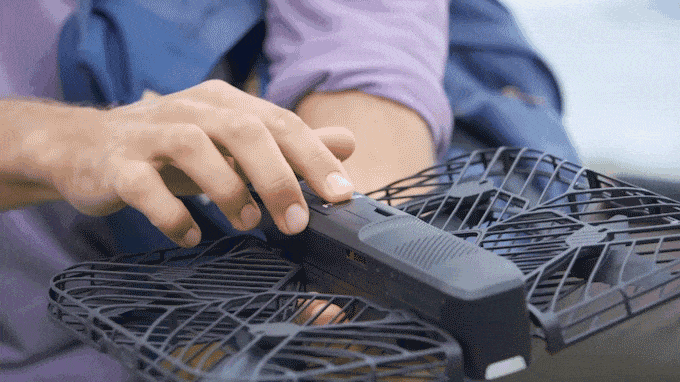As we hinted last week, ZeroZero Robotics has today launched the Hover 2.
Hover 2 is a follow-up to the successful Hover Camera Passport – the flying camera that hit the consumer drone market back in 2016 and went on to be sold in Apple stores.
ZeroZero Robotics has decided to run the pre-orders for the Hover 2 through crowdfunding platform Kickstarter. That kind of thing seems to be becoming increasingly popular with manufacturers who are effectively ready to go but looking to raise publicity.
So, what do we know about the Hover 2?…
A focus on AI and autonomy
Our first impression from reading through the Hover 2 material is that the company is aiming to bring to market a budget version of the impressive Skydio R1.
That’s because the focus is very much on this being a personal flying camera, rather than a drone would buy for the purpose of taking full control of it at all times. The idea, just like Skydio’s R1, is that the drone’s computer vision is sophisticated enough to handle the controls, avoid obstacles and capture smooth video – leaving you to do whatever it is you want to do.

We mentioned last week that the preview images showed some kind of sensor array sitting at the top of the Hover 2. And we were partly right. The swivelling eyes are actually what the team describes as an Optical Radar. The stereo sensor spins on a 360 axis to give the drone depth perception in every direction.
This feeds into a SLAM 3D mapping system and combines with VIO (Visual Inertial Odometry) and ZeroZero Robotics’ path planning features. The result is, according to the company, a drone capable of navigating complex new environments with 360º obstacle avoidance. It can also bypass obstacles while tracking a target in real time.
The companies algorithms are powered by Qualcomm’s flagship Snapdragon processor.
Two drones in one?
As well as the new obstacle detect and avoid system, the Hover 2 retains some of the features that made the original so popular. Chief among them is the foldable outer casing, which should make the Hover 2 just as portable as the Hover Camera Passport.
However, this time the casing can be removed as part of ‘BlastOff Mode’.
With a few minor changes, the drone can suddenly be flown with the BlastOff controller. Aerially enhanced propeller guards offer improved aerodynamics and increases flight time up to 23 minutes.
4K Video and Palm Pilot
Apart from the BlastOff controller, the Hover 2 comes with a ‘Palm Pilot’, a small handheld device to control its basic functions.
The Palm Pilot auto-pairs with the Hover 2 to get you and it allows pilots to control the drone one-handed. There are shortcuts to quickly select flight and capture features. The idea is that it’s easier than using a mobile phone for on-the-go activities.
An LCD screen on the Palm Pilot displays first-person POV, letting you see what the drone sees.
The Hover 2 shoots 4K video and 12-megapixel photos with its 1/2.3in CMOS sensor. The camera sits on a mechanical gimbal. ZeroZero have released some test footage (below) but say they are still fine tuning the imaging algorithms.
How much does the Hover 2 cost?
Part of the reason ZeroZero Robotics have chosen to launch on Kickstarter is the lure of discounts for early backers. The packages start from $399. If it performs anywhere close to Skydio’s attempt at a self-flying camera, that could be a bargain.
Clearly many people think so. The project is already over 200% past its original fundraising target. Delivery is expected in March 2019.
Malek Murison is a freelance writer and editor with a passion for tech trends and innovation. He handles product reviews, major releases and keeps an eye on the enthusiast market for DroneLife.
Email Malek
Twitter:@malekmurison
Subscribe to DroneLife here.

